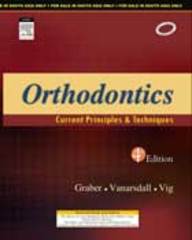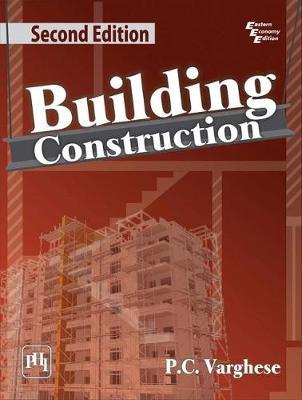Description
Book Description
The world’s bestselling orthodontics reference, Graber’s Orthodontics offers all the essentials of orthodontic care — from diagnosis to treatment. This edition includes the latest evidence-based research and concepts of today’s orthodontics, with coverage of treatment methods ranging from basic to highly complex situations. Written by a team of world-renowned authors, this book offers practical information that you can use every day.
? New case studies complement most chapters and demonstrate the most current techniques being utilized in the field today. ? New information on the orthodontist’s function on a craniofacial team offers discussion of the orthodontist’s role in a larger process; this content comes from new author Dr. Katherine W.L. Vig, an expert on craniofacial teams. ? Section on genetics promotes understanding of how genetic factors, in concert with environmental factors, influence the development of malocclusion. ? Chapter on cranial morphology adds another important concept that orthodontists must take into consideration when planning treatments. ? Indirect bonding content explains the system that has been developed, discusses its advantages, and presents step-by-step instructions on how to understand and utilize the process and materials. ? Coverage of fiber-reinforced composite (FRC) applications provides the reader with knowledge of this important topic. ? Chapter on SPEED appliance and philosophy presents a comprehensive discussion of self-ligating brackets and informs readers how the appliance transcends limitations and provides efficiency and precision tooth positioning. ? Distraction osteogenesis information clarifies the use of this method to minimize or avoid potential complications with proper preoperative planning and execution. ? Material on retention appliances is expanded, allowing readers the opportunity to learn more about the process of determining patient suitability for them. ? The brand new full-color design and the addition of full-color ? Chapter on In-Ovation Brackets updates information on fully adjusted appliances with specific evaluation of the appliance’s advantages and an exemplary case study.
About Author:Thomas M. Graber, DMD, MSD, PhD, OdontDr, DSc, ScD, MD, FDSRCS(Eng), Director, Kenilworth Dental Research Foundation, Clinival Professor, Orthodontics, University of Illinois, Chicago, IL, Former Professor and Chairman, Section of Orthodontics, Pritzker School of Medicine, University of Chicago, Chicago, IL; Editor-in-Chief, World Orthodontic Journal; Editor-in-Chief, American Journal of Orthodontics and Dentofacial Orthopedics; Recipent, Albert H. Ketcham Award, Recipent, AAO Distinguished Service Award, Recipient, Joseph Jarabak International Teaching and Research Award, Recipient, MSO Outstanding Teacher Award, Recipient, Mershon and Hellman Lecture Award, Recipient, Heritage Lecture Award.Robert L. Vanarsdall, Jr., DDS, Professor and Chairman, Department of Orthodontics, School of Dental Medicine, University of Pennsylvania; Staff, Children’s Hospital of Philadelphia, Albert Einstein Medical Center, and the Medical College of Pennsylvania; Co-editor, Journal of Adult Orthodontics and Orthognathic Surgery; Private Practice, Philadelphia, PA.Katherine W. L. Vig, BDS, MS, FDS(RCS), DOrth, Professor and Chair, Section of Orthodontics, College of Dentistry, Ohio State University, Columbus, OH. New to edition ? New case studies complement most chapters and demonstrate the most current techniques being utilized in the field today. ? New information on the orthodontist’s function on a craniofacial team offers discussion of the orthodontist’s role in a larger process; this content comes from new author Dr. Katherine W.L. Vig, an expert on craniofacial teams. ? Section on genetics promotes understanding of how genetic factors, in concert with environmental factors, influence the development of malocclusion. ? Chapter on cranial morphology adds another important concept that orthodontists must take into consideration when planning treatments. ? Indirect bonding content explains the system that has been developed, discusses its advantages, and presents step-by-step instructions on how to understand and utilize the process and materials. ? Coverage of fiber-reinforced composite (FRC) applications provides the reader with knowledge of this important topic. ? Chapter on SPEED appliance and philosophy presents a comprehensive discussion of self-ligating brackets and informs readers how the appliance transcends limitations and provides efficiency and precision tooth positioning. ? Distraction osteogenesis information clarifies the use of this method to minimize or avoid potential complications with proper preoperative planning and execution. ? Material on retention appliances is expanded, allowing readers the opportunity to learn more about the process of determining patient suitability for them. ? The brand new full-color design and the addition of full-color ? Chapter on In-Ovation Brackets updates information on fully adjusted appliances with specific evaluation of the appliance’s advantages and an exemplary case study.
Table Of Contents:1.Special Considerations in Diagnosis and Treatment Planning 2. Craniofacial Imaging in Orthodontics 3. Genetics and Orthodontics 4. The Upper Airway and Cranial Morphology 5. Tissue Reactions in Orthodontics 6. Bone Physiology, Metabolism, and Biomechanics in Orthodontic Practice 7. Application of Bioengineering to Clinical Orthodontics 8. Orthodontic Therapy and the Temporomandibular Disorder 9. Biomaterials in Orthodontics 10. Statistics for the Orthodontist 11. Interceptive Guidance of Occlusion with Emphasis on Diagnosis 12. Functional Appliances 13. Treatment of Patients in the Mixed Dentition 14. Bonding in Orthodontics 15. Precise Bracket Placement: Effective and Efficient Indirect Bonding 16. The Tweed-Merrifield Edgewise Appliance: Philosophy, Diagnosis, and Treatment 17. Self-Ligation Orthodontics with the SPEED Appliance 18. Treating the Face with Biocompatible Orthodontics 19. The In-Ovation Bracket for Fully Adjusted Appliances 20. Nonextraction Treatment 21. Treatment Options for Sagittal Corrections in Noncompliant Patients 22. Periodontal/Orthodontic Interrelationships 23. Adult Interdisciplinary Therapy: Diagnosis and Treatment 24. Orthodontic Aspects of Orthognathic Surgery 25. Craniofacial Distraction Osteogenesis: Basic Principles and Clinical Applications 26. The Orthodontist’s Role in a Cleft Palate-Craniofacial Team 27. Retention and Relapse 28. Clear Plastic Appliances for Retention and Tooth Movement
Special Features:? Comprehensive coverage of multiple appliances and materials in orthodontics today ensures that the readers learn everything they need to know for their own practice.
? World-renowned orthodontic researcher, academic, and practitioner contributions add credibility and expertise to each chapter of the text, making it an authoritative resource.
? Extensive references allow readers to delve further into orthodontic research or study topics related to the evidence-based research presented in each chapter.
? Tables and boxes throughout the text offer streamlined information from the text and elaborate on the concepts illustrated in the figures.
? The extensive collection of illustrations and clinical photographs demonstrate case studies and treatment options in detail, offering visual evidence of orthodontic techniques, problems, and solutions.
? New case studies complement most chapters and demonstrate the most current techniques being utilized in the field today. ? New information on the orthodontist’s function on a craniofacial team offers discussion of the orthodontist’s role in a larger process; this content comes from new author Dr. Katherine W.L. Vig, an expert on craniofacial teams. ? Section on genetics promotes understanding of how genetic factors, in concert with environmental factors, influence the development of malocclusion. ? Chapter on cranial morphology adds another important concept that orthodontists must take into consideration when planning treatments. ? Indirect bonding content explains the system that has been developed, discusses its advantages, and presents step-by-step instructions on how to understand and utilize the process and materials. ? Coverage of fiber-reinforced composite (FRC) applications provides the reader with knowledge of this important topic. ? Chapter on SPEED appliance and philosophy presents a comprehensive discussion of self-ligating brackets and informs readers how the appliance transcends limitations and provides efficiency and precision tooth positioning. ? Distraction osteogenesis information clarifies the use of this method to minimize or avoid potential complications with proper preoperative planning and execution. ? Material on retention appliances is expanded, allowing readers the opportunity to learn more about the process of determining patient suitability for them. ? The brand new full-color design and the addition of full-color ? Chapter on In-Ovation Brackets updates information on fully adjusted appliances with specific evaluation of the appliance’s advantages and an exemplary case study.
About Author:Thomas M. Graber, DMD, MSD, PhD, OdontDr, DSc, ScD, MD, FDSRCS(Eng), Director, Kenilworth Dental Research Foundation, Clinival Professor, Orthodontics, University of Illinois, Chicago, IL, Former Professor and Chairman, Section of Orthodontics, Pritzker School of Medicine, University of Chicago, Chicago, IL; Editor-in-Chief, World Orthodontic Journal; Editor-in-Chief, American Journal of Orthodontics and Dentofacial Orthopedics; Recipent, Albert H. Ketcham Award, Recipent, AAO Distinguished Service Award, Recipient, Joseph Jarabak International Teaching and Research Award, Recipient, MSO Outstanding Teacher Award, Recipient, Mershon and Hellman Lecture Award, Recipient, Heritage Lecture Award.Robert L. Vanarsdall, Jr., DDS, Professor and Chairman, Department of Orthodontics, School of Dental Medicine, University of Pennsylvania; Staff, Children’s Hospital of Philadelphia, Albert Einstein Medical Center, and the Medical College of Pennsylvania; Co-editor, Journal of Adult Orthodontics and Orthognathic Surgery; Private Practice, Philadelphia, PA.Katherine W. L. Vig, BDS, MS, FDS(RCS), DOrth, Professor and Chair, Section of Orthodontics, College of Dentistry, Ohio State University, Columbus, OH. New to edition ? New case studies complement most chapters and demonstrate the most current techniques being utilized in the field today. ? New information on the orthodontist’s function on a craniofacial team offers discussion of the orthodontist’s role in a larger process; this content comes from new author Dr. Katherine W.L. Vig, an expert on craniofacial teams. ? Section on genetics promotes understanding of how genetic factors, in concert with environmental factors, influence the development of malocclusion. ? Chapter on cranial morphology adds another important concept that orthodontists must take into consideration when planning treatments. ? Indirect bonding content explains the system that has been developed, discusses its advantages, and presents step-by-step instructions on how to understand and utilize the process and materials. ? Coverage of fiber-reinforced composite (FRC) applications provides the reader with knowledge of this important topic. ? Chapter on SPEED appliance and philosophy presents a comprehensive discussion of self-ligating brackets and informs readers how the appliance transcends limitations and provides efficiency and precision tooth positioning. ? Distraction osteogenesis information clarifies the use of this method to minimize or avoid potential complications with proper preoperative planning and execution. ? Material on retention appliances is expanded, allowing readers the opportunity to learn more about the process of determining patient suitability for them. ? The brand new full-color design and the addition of full-color ? Chapter on In-Ovation Brackets updates information on fully adjusted appliances with specific evaluation of the appliance’s advantages and an exemplary case study.
Table Of Contents:1.Special Considerations in Diagnosis and Treatment Planning 2. Craniofacial Imaging in Orthodontics 3. Genetics and Orthodontics 4. The Upper Airway and Cranial Morphology 5. Tissue Reactions in Orthodontics 6. Bone Physiology, Metabolism, and Biomechanics in Orthodontic Practice 7. Application of Bioengineering to Clinical Orthodontics 8. Orthodontic Therapy and the Temporomandibular Disorder 9. Biomaterials in Orthodontics 10. Statistics for the Orthodontist 11. Interceptive Guidance of Occlusion with Emphasis on Diagnosis 12. Functional Appliances 13. Treatment of Patients in the Mixed Dentition 14. Bonding in Orthodontics 15. Precise Bracket Placement: Effective and Efficient Indirect Bonding 16. The Tweed-Merrifield Edgewise Appliance: Philosophy, Diagnosis, and Treatment 17. Self-Ligation Orthodontics with the SPEED Appliance 18. Treating the Face with Biocompatible Orthodontics 19. The In-Ovation Bracket for Fully Adjusted Appliances 20. Nonextraction Treatment 21. Treatment Options for Sagittal Corrections in Noncompliant Patients 22. Periodontal/Orthodontic Interrelationships 23. Adult Interdisciplinary Therapy: Diagnosis and Treatment 24. Orthodontic Aspects of Orthognathic Surgery 25. Craniofacial Distraction Osteogenesis: Basic Principles and Clinical Applications 26. The Orthodontist’s Role in a Cleft Palate-Craniofacial Team 27. Retention and Relapse 28. Clear Plastic Appliances for Retention and Tooth Movement
Special Features:? Comprehensive coverage of multiple appliances and materials in orthodontics today ensures that the readers learn everything they need to know for their own practice.
? World-renowned orthodontic researcher, academic, and practitioner contributions add credibility and expertise to each chapter of the text, making it an authoritative resource.
? Extensive references allow readers to delve further into orthodontic research or study topics related to the evidence-based research presented in each chapter.
? Tables and boxes throughout the text offer streamlined information from the text and elaborate on the concepts illustrated in the figures.
? The extensive collection of illustrations and clinical photographs demonstrate case studies and treatment options in detail, offering visual evidence of orthodontic techniques, problems, and solutions.
Author: Graber. Vanarsdall
Publisher: Graber. Vanarsdall
ISBN-13: 9.78813E+12
Language: ENGLISH
Binding: HARD COVER
Country of Origin: India











Reviews
There are no reviews yet.